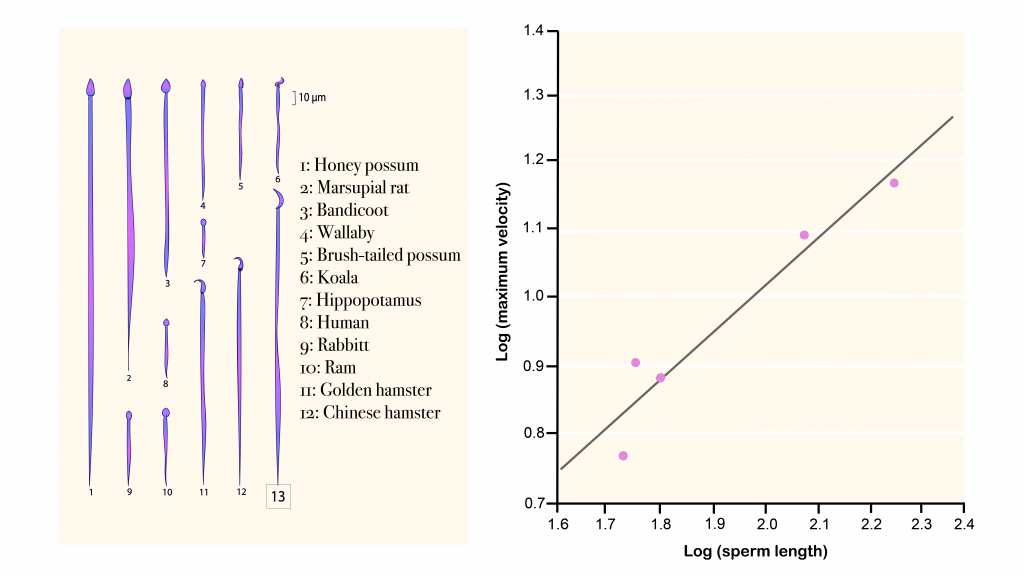52 Post-Copulatory Sexual Selection
Remember that sexual selection does not come to a halt after animals have mated! If a female mates with multiple males, such that sperm from several individuals remains in her body for an extended period of time, sexual selection can continue long after a male and female have mated. Just like with sexual selection before mating, post-copulatory sexual selection occurs in two forms: cryptic female choice- an extension of mate choice; and sperm competition- an extension of mate competition.
Cryptic female choice
Using physical or chemical mechanisms, females can bias paternity and affect male reproductive success by choosing whether certain sperm are successful in fertilizing their eggs. The term “cryptic” is used to describe an internal, and thereby hidden, process that females employ to choose the sperm from males that they prefer. The research suggests that cryptic female choice is likely a consequence of sexual conflict regarding the frequency and mode of mating. While males increase their fitness by successfully mating with as many females as possible, and thereby fertilizing as many eggs as possible from different females, females can incur fitness costs associated with mating with many males. Cryptic female choice reduces these costs by allowing females to mate multiply (as males wish to do), but then only select sperm from the favorable males afterwards. Here, females benefit by influencing paternity in favor of the males they prefer- possibly because they provide some direct or indirect benefit to her.
Sperm competition
Sperm competition, an extension of mate competition, is the process by which sperm from two or more males compete for fertilization of a female’s egg or eggs. Sperm competition is often compared to having tickets in a raffle: a male has a better chance of having their ticket drawn (i.e. fathering offspring) if he has more tickets in the raffle (i.e. he releases more sperm per ejaculate into a female’s reproductive tract). Alternatively, males may not release more sperm, but instead they evolve faster, more motile sperm that allow an individual’s sperm to reach a female’s eggs first. Among the best evidence we have for sperm competition is the evolution of longer sperm tails in animals that have multiple partners.

Remember that sexual conflict can give rise to antagonistic behaviors to bias paternity. Here, cryptic female choice is a way for females to bias paternity in favor of males that are better or that she prefers. However, we should expect that males, in turn, evolve in response to this cryptic choice so as to bias paternity in their favor.
This chapter is licensed under a Creative Commons Attribution-NonCommercial-ShareAlike 4.0 International License

